
The Port of Livorno is one of the largest Italian seaports and one of the largest seaports in the Mediterranean Sea, with an annual traffic capacity of around 30 million tonnes of cargo and 700,000 TEU's.

Portoferraio lighthouse, called Faro del Forte Stella Lighthouse since is placed on the northern rampart of Forte Stella built in 1548 by Cosimo I de' Medici in Portoferraio, Elba.
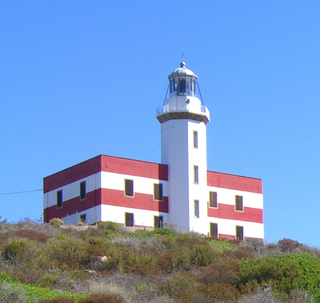
Punta di Capel Rosso lighthouse or Punta Rossa is an active lighthouse on Isola del Giglio on the Tyrrhenian Sea.

Pianosa Lighthouse is an active lighthouse located on the east side of Pianosa Island.
Scoglio d'Africa Lighthouse is an active lighthouse located on a solitary skerry, Scoglio d'Africa, in open Tyrrhenian Sea halfway Montecristo and Pianosa.

Scoglietto Lighthouse Italian: Faro dello Scoglietto is an active lighthouse located on the summit of a rocky islet without vegetation located in front of Portoferraio in the Piombino Channel at 1.4 kilometres (0.87 mi) from Punta Capo Bianco and 1 kilometre (0.62 mi) from Punta Falconaia.
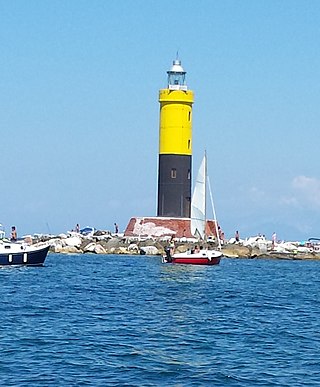
Meloria south end Lighthouse is an active lighthouse located in the Ligurian Sea, 3 nautical miles west of the south entrance of the Port of Livorno, in the southern part of the Meloria shoal.
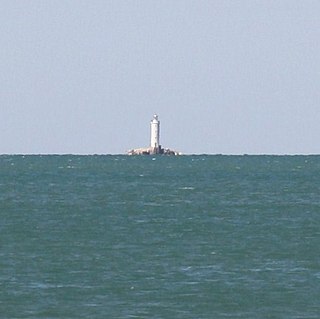
Meloria north end Lighthouse is an active lighthouse located in the Ligurian Sea, 7.5 nautical miles north of Meloria south end Lighthouse and 7.5 nautical miles north west of Livorno, in the northern part of the Meloria shoal.
Punta Paratella Lighthouse is an active lighthouse located on the northernmost extremity of Gorgona, one of the islands of the Tuscan Archipelago, 15 nautical miles from Livorno.

Civitanova Marche Lighthouse is an active lighthouse located in front of the Port of Civitanova Marche, Marche on the Adriatic Sea.

Punta Lingua Lighthouse is an active lighthouse located on the south eastern tip of the island of Salina, which makes part of the Aeolian Islands, in the municipality of Santa Marina Salina on the Tyrrhenian Sea.
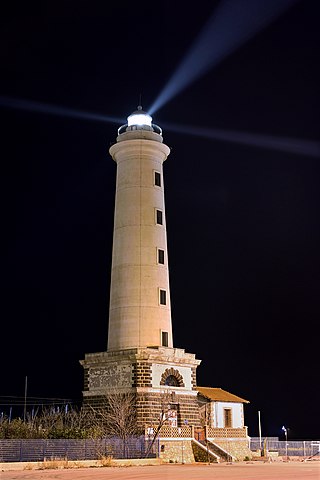
The San Giacomo Lighthouse is an active lighthouse at the root of the east wharf of the commercial harbour of Licata on the Channel of Sicily. The lighthouse takes its name from the homonymous castle once on the site, then later destroyed to make room for the seaport.

Scogli Porcelli Lighthouse is an active lighthouse located 3 nautical miles offshore Trapani on a series of emerging rocks. Scogli Porcelii makes part of Aegadian Islands on the Sicily Channel.
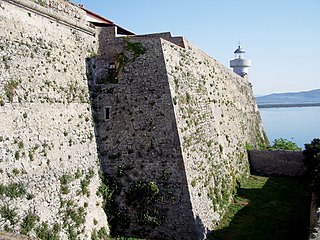
Forte La Rocca Lighthouse is an active lighthouse located next to the tip of the promontory of the Argentario on the Tyrrhenian Sea.
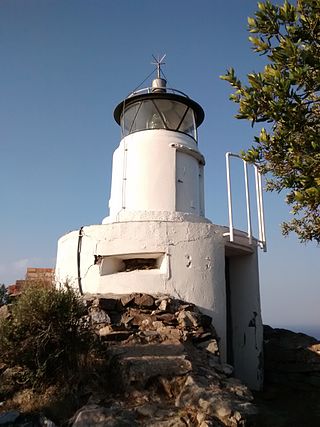
Monte Poro Lighthouse is an active lighthouse located on the summit of Monte Poro, in the south western part of Elba on the Tyrrhenian Sea, a region covered by Macchia Mediterranea. The place was of some strategic interest during World War II because close to the lighthouse are the ruins of a German position.

Vada Shoal Lighthouse is an active lighthouse, located circa 4 nautical miles offshore Vada on the Ligurian Sea, in order to signalling the presence of the shoals. The Lighthouse belong to the municipal area of Rosignano Marittimo.

Talamone Lighthouse is an active lighthouse, located on the southern tip of the rocky promontory of Talamone in the Tuscan Maremma on the Tyrrhenian Sea.

Viareggio Diga Foranea Lighthouse is an active lighthouse, located at halfway the breakwater of the dock of Viareggio on the Ligurian Sea.

Murano Lighthouse is an active lighthouse located in the south east part of the island of Murano in the Venetian Lagoon on the Adriatic Sea.

Lido Fanale Anteriore Lighthouse is an active lighthouse located on the northern tip of the island of Lido di Venezia, in the Venetian Lagoon on the Adriatic Sea; the place where is the main access to Venice by ship route.



















